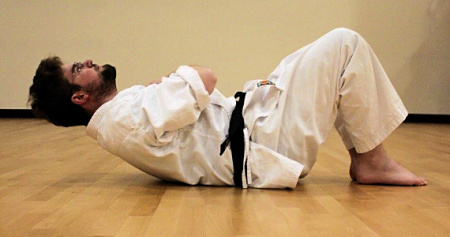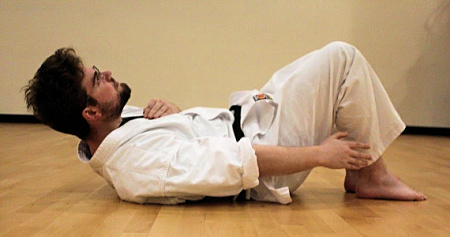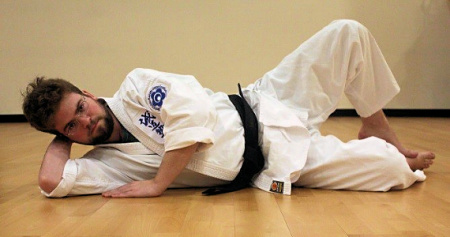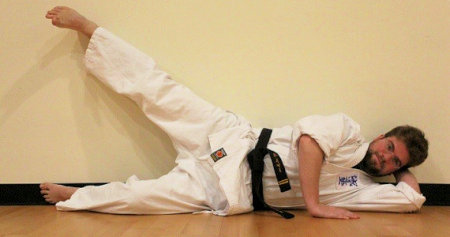2020 February
2018 December August June February
2017 December September June March
2016 November August June March
2015 December October July May February
2014 December October July April February
2013 December October August May February
2012 December September July April February
2011 December September July April February
from the March, 2016 issue of Kiai!
Self-Training: Hip and Core Exercises to Improve Your Karate
By Tabitha Olson
Advanced Brown Belt
Many people take karate classes because it’s an interesting and fun way to get physical activity into their lives. Often though, people reach a plateau and can’t improve their techniques no matter how hard they try. The problem is, while karate is a good physical activity, after a while it’s not quite enough on its own. If you want to improve your techniques, doing some exercises outside of class will help you.
The most important areas to focus on for karate are core and hips. Having a strong core helps you with balance. When we’re doing all those kicking drills with no set-down in between, a strong core will help to keep you from falling over. A strong core will also help you take contact in sparring. When we practice impact drills in class, when that contact comes, you tense up your muscles and release your breath. The stronger your muscles are, the harder a hit you’ll be able to take. Having strong hips will help keep your chamber leg up during those no-set-down kicking drills. Strong hips are also essential for low stances. If you want to improve the depth of your stances, you need to increase your hip strength.
Fortunately, there are some basic exercises that you can do that don’t require much space, and you can do them while watching TV or otherwise relaxing.

Crunches

Side Crunches

Clams

Side Leg Rises
That’s the front of your core. Now let’s focus on the sides, or the obliques. Just like for straight crunches, lay on the floor with your knees bent. Place your hands by your sides and raise your shoulder blades off the floor. Then reach down one side until you touch your ankle. Reach to the other side and touch the other ankle. You can also break these up into sets – just make sure you do the same amount of crunches on each side.
For hips, there are a number of exercises that work well. This first one is called “clams”: lie on the floor on your side, both knees bent and keeping your feet in line with your hips. Raise one knee as high as you can, engaging the muscles on the sides and back of your hips, then put it back down. Start with sets of ten on each side and repeat until you feel your muscles fatigue.
The next exercise is basically side-rising kick from the ground, using a wall as a guide to ensure you’re engaging the correct muscles. Lie on the floor with your back to a wall, bending the bottom leg slightly for stability. Keep the top leg straight and place your heel on the wall, then raise your leg as high as you can. Hold that for five seconds, then bring it back down. Do five of these, then do five on the other side. This is a pretty intense workout, but if your muscles aren’t tired yet then do five more on each side.
Once you’re done with your exercises, stretch! Stretching increases blood flow to the muscles and improves flexibility, which gives you a better range of motion in your joints. This can reduce the risk of injury in future activity. So, do some basic stretches after physical activity and your body will thank you.
